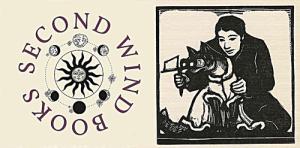The Brontës’ Secret Science Fiction Stories
The British Library’s major new exhibition Out of this World: Science Fiction but not as you know it reveals the imaginary worlds of the Brontë children.
In their childhood, Charlotte, Branwell, Emily and Anne Brontë created imaginary countries collectively called the Glass Town Federation. Branwell and Charlotte invented the kingdom of Angria, while Emily and Anne created the world of Gondal. They became obsessive about their imaginary worlds, drawing maps and creating lives for their characters and featured themselves as the ‘gods’ (‘genii’) of their world. Their stories are in tiny micro-script, as if written by their miniature toy soldiers.
The Brontës wrote about their imaginary countries in the form of long sagas which were ‘published’ as hand-written books and magazines, reminiscent of the early fanzines created by science fiction fans from the 1930s, as well as the imaginary worlds made up by many writers such as JRR Tolkien and CS Lewis in their childhood and adolescence. Just like today’s writers of ‘fan-fiction’ who use characters and settings from their favourite television shows and books (from Star Trek to Harry Potter), the Brontës used both fictional and real-life characters, such as the Duke of Wellington.
The Young Men’s magazine (the history of which is told by Branwell in 'The History Of The Young Men From Their First Settlement To The Present Time'), contains an introduction where Branwell gives an account of the toy soldiers which gave rise to the game that resulted in creating imaginary worlds. Originally a place of fantasy, Glass Town, the capital of the Federation, assumed the characteristics of the 19th century city. The map of Glass Town drawn by Branwell has a prototype - a map of real explorations in northern and central Africa in 1822-1824, while the hero of the saga was the real Duke of Wellington - a foreshadowing of what would later become the established genre of alternative histories.
At some point Emily and Anne stopped contributing to the Glass Town and Angria stories in order to create their own imaginary world of Gondal, probably as a rebellion against their older siblings who usually gave them inferior roles to play in the games. Unfortunately, the chronicles of this imaginary place written in prose were lost and only poems are now known. As with the Glass Town writings, these poems are concerned with love and war and explore various modes of identity. Emily Brontë’s Gondal poems relate to characters in the stories, who came from either side of two warring factions.
Early biographers of Emily assumed that the events described in the poems related to her own life, but instead they were figments of her extremely active imagination, and, like Wuthering Heights, not directly written from personal experience. Charlotte Brontë’s poem ‘The Foundling’ tells the story of a young man who emigrates to Glass Town. There he gets involved in politics, falls in love and discovers that he is of a noble background.
Guest curator Andy Sawyer, Director of Science Fiction Studies MA at the University of Liverpool, said:
“The Brontës are well known authors with no apparent association with science fiction but their tiny manuscript books, held at the British Library, are one of the first examples of fan fiction, using favourite characters and settings in the same way as science fiction and fantasy fans now play in the detailed imaginary ‘universes’ of Star Trek or Harry Potter. While the sense of fantasy is strong, there are teasing examples of what might be called the beginnings of science fiction.
“I hope the exhibition at the British Library will challenge what people think of as science fiction and show that it is not a narrow genre, but something that appears in many times, cultures, and literary forms. It embraces works of utopian and speculative fiction that many people may not consider as 'Science Fiction', such as Mary Shelley’s Frankenstein, George Orwell’s 1984 and Audrey Niffeneger’s The Time-Traveler’s Wife.”
Out of this World: Science Fiction but not as you know it is open from 20 May 2011 - 25 September 2011 in the PACCAR Gallery at the British Library. Admission to the exhibition is FREE. www.bl.uk/sciencefiction
The British Library is the national library of the United Kingdom and one of the world's greatest research libraries. It provides world class information services to the academic, business, research and scientific communities and offers unparalleled access to the world's largest and most comprehensive research collection. The Library's collection has developed over 250 years and exceeds 150 million separate items representing every age of written civilisation and includes books, journals, manuscripts, maps, stamps, music, patents, photographs, newspapers and sound recordings in all written and spoken languages. Up to 10 million people visit the British Library website - www.bl.uk - every year where they can view up to 4 million digitised collection items and over 40 million pages.
In their childhood, Charlotte, Branwell, Emily and Anne Brontë created imaginary countries collectively called the Glass Town Federation. Branwell and Charlotte invented the kingdom of Angria, while Emily and Anne created the world of Gondal. They became obsessive about their imaginary worlds, drawing maps and creating lives for their characters and featured themselves as the ‘gods’ (‘genii’) of their world. Their stories are in tiny micro-script, as if written by their miniature toy soldiers.
The Brontës wrote about their imaginary countries in the form of long sagas which were ‘published’ as hand-written books and magazines, reminiscent of the early fanzines created by science fiction fans from the 1930s, as well as the imaginary worlds made up by many writers such as JRR Tolkien and CS Lewis in their childhood and adolescence. Just like today’s writers of ‘fan-fiction’ who use characters and settings from their favourite television shows and books (from Star Trek to Harry Potter), the Brontës used both fictional and real-life characters, such as the Duke of Wellington.
The Young Men’s magazine (the history of which is told by Branwell in 'The History Of The Young Men From Their First Settlement To The Present Time'), contains an introduction where Branwell gives an account of the toy soldiers which gave rise to the game that resulted in creating imaginary worlds. Originally a place of fantasy, Glass Town, the capital of the Federation, assumed the characteristics of the 19th century city. The map of Glass Town drawn by Branwell has a prototype - a map of real explorations in northern and central Africa in 1822-1824, while the hero of the saga was the real Duke of Wellington - a foreshadowing of what would later become the established genre of alternative histories.
At some point Emily and Anne stopped contributing to the Glass Town and Angria stories in order to create their own imaginary world of Gondal, probably as a rebellion against their older siblings who usually gave them inferior roles to play in the games. Unfortunately, the chronicles of this imaginary place written in prose were lost and only poems are now known. As with the Glass Town writings, these poems are concerned with love and war and explore various modes of identity. Emily Brontë’s Gondal poems relate to characters in the stories, who came from either side of two warring factions.
Early biographers of Emily assumed that the events described in the poems related to her own life, but instead they were figments of her extremely active imagination, and, like Wuthering Heights, not directly written from personal experience. Charlotte Brontë’s poem ‘The Foundling’ tells the story of a young man who emigrates to Glass Town. There he gets involved in politics, falls in love and discovers that he is of a noble background.
Guest curator Andy Sawyer, Director of Science Fiction Studies MA at the University of Liverpool, said:
“The Brontës are well known authors with no apparent association with science fiction but their tiny manuscript books, held at the British Library, are one of the first examples of fan fiction, using favourite characters and settings in the same way as science fiction and fantasy fans now play in the detailed imaginary ‘universes’ of Star Trek or Harry Potter. While the sense of fantasy is strong, there are teasing examples of what might be called the beginnings of science fiction.
“I hope the exhibition at the British Library will challenge what people think of as science fiction and show that it is not a narrow genre, but something that appears in many times, cultures, and literary forms. It embraces works of utopian and speculative fiction that many people may not consider as 'Science Fiction', such as Mary Shelley’s Frankenstein, George Orwell’s 1984 and Audrey Niffeneger’s The Time-Traveler’s Wife.”
Out of this World: Science Fiction but not as you know it is open from 20 May 2011 - 25 September 2011 in the PACCAR Gallery at the British Library. Admission to the exhibition is FREE. www.bl.uk/sciencefiction
The British Library is the national library of the United Kingdom and one of the world's greatest research libraries. It provides world class information services to the academic, business, research and scientific communities and offers unparalleled access to the world's largest and most comprehensive research collection. The Library's collection has developed over 250 years and exceeds 150 million separate items representing every age of written civilisation and includes books, journals, manuscripts, maps, stamps, music, patents, photographs, newspapers and sound recordings in all written and spoken languages. Up to 10 million people visit the British Library website - www.bl.uk - every year where they can view up to 4 million digitised collection items and over 40 million pages.

















